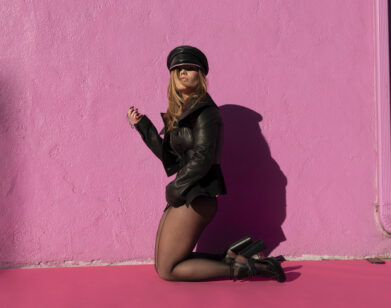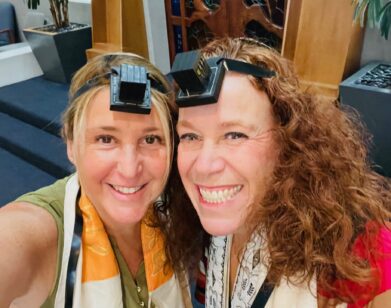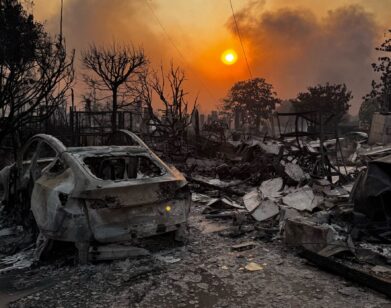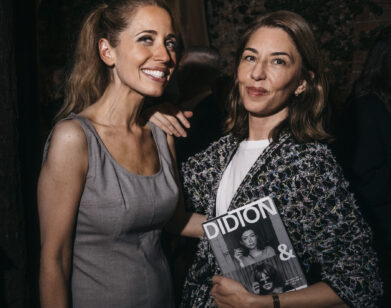Denise Scott Brown Thinks “Tacky” is A Term of Endearment
For the Summer issue of Interview, I was tasked with the joy of asking nine esteemed architects about their favorite tacky Los Angeles buildings. And, in the process, I got the chance to speak at length with the person who paved the way for this question to even be asked critically: Denise Scott Brown. Penned at the height of architecture’s hyper-macho modernist phase, Brown’s legendary book, Learning from Las Vegas, which she co-authored with her late husband Robert Venturi, put forth a very simple yet radical proposal: that the architectural junk space of American capitalism was something to be studied, not scoffed at.
Beginning in the late 1960s, Denise and Venturi began a series of field trips to Las Vegas that culminated in a research studio at Yale, and finally Learning from Las Vegas, published in 1972. Highway signs, parking lots, casinos, buildings in the shape of ducks—these were pure representations not only of the new prefab lifestyles of the 20th century, but a continuation of ancient architectural tropes. A casino advertisement on the Strip in Las Vegas used the same techniques to attract your attention as a victory banner along a Roman promenade. And under the boosterism of a burgeoning capitalist design market, the distinction between highbrow and lowbrow was all but irrelevant.
If Las Vegas was the mecca of Brown and Venturi’s ideology, Los Angeles was its homeplace. It was the city they lived in, where they got married, and a city they frequented while developing what would become Learning from Las Vegas. Today, Brown is completing a new book of photographs from that time until today. Quirky, sprawling, and meandering at times, the Los Angeles that Brown depicts in her book remains largely intact: a mish-mash of modernist designs, cafes that look like cars, and Case Study homes hidden in the hills, where the absence of rules is the rule itself.
Speaking with us in anticipation of her new book, Brown was able to synthesize a new rubric for us to read LA. To her, tackiness is a term of endearment. To be tacky is to be real and without falsehoods. And as Los Angeles continues to mull over what its history should be, Brown shows again how the ideologies she and Venturi developed over half a century ago remain extremely relevant today.
———
DENISE SCOTT BROWN: I’ve come up with a new terminology to describe tackiness in Los Angeles. I’m calling it… A catechismic taxonomy of the tacky.
PATRICK MCGRAW: I love it.
SCOTT BROWN: LA is one of the most versatile places in the world and the tackiness is not just in its houses and buildings. In LA, there’s whole themes of tackiness, whole neighborhoods of it. Have you ever thought about tacky freeways? Or the acres of little country houses and farmhouses? Then there’s the houses that have pools. I have photographs where I try to get five or six pools together as I’m flying over. There’s also a lot of houses with a pocket handkerchief of lawn in front of each, and down their shared access pathway, a narrow view of the Pacific Ocean.
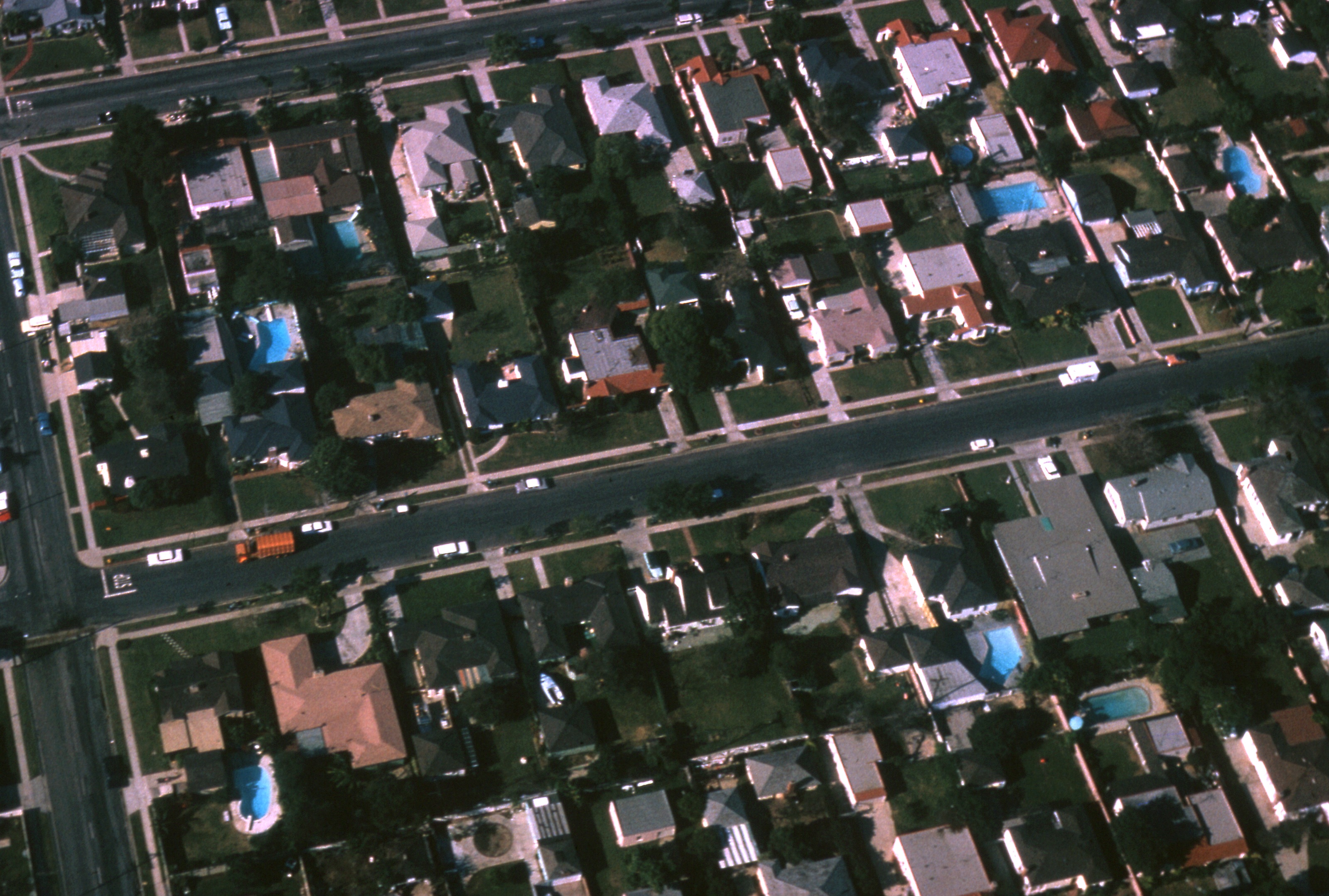
MCGRAW: All of this is going into the book you’re doing?
SCOTT BROWN: Yes, it’s all with me, in the stuff I did in the 1960s. I’m going through my photographs and writing about it now. Some of the examples of tackiness include machine romanticism, industrial irony, and highway lyricism.
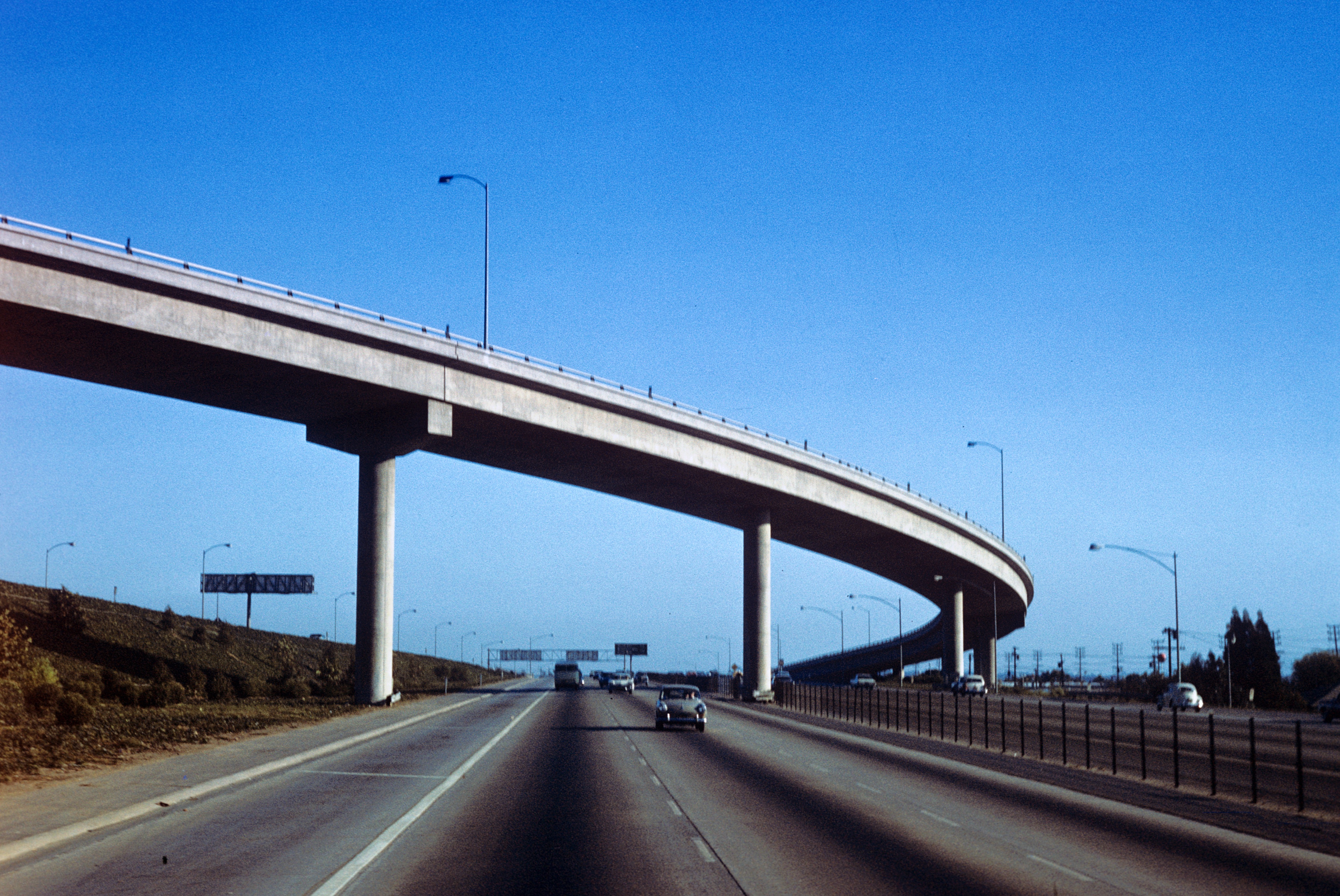

MCGRAW: Tackiness is something that extends beyond style. Beyond the individual. It’s actually in the foundations of the city.
SCOTT BROWN: And in its terrain. Actually the tackiest things I can think of are houses on the bluffs above the Pacific Coast Highway. They’re built on sand and in an earthquake the bluff could liquify and the houses end up with their noses on the ground. And then there’s the commercial environment. If a camera is a contraption that helps you see and photograph, a billboard is one that supports a message at a distance and angle that helps the lens of your eye see it for the longest time possible. For a mile on some freeways.
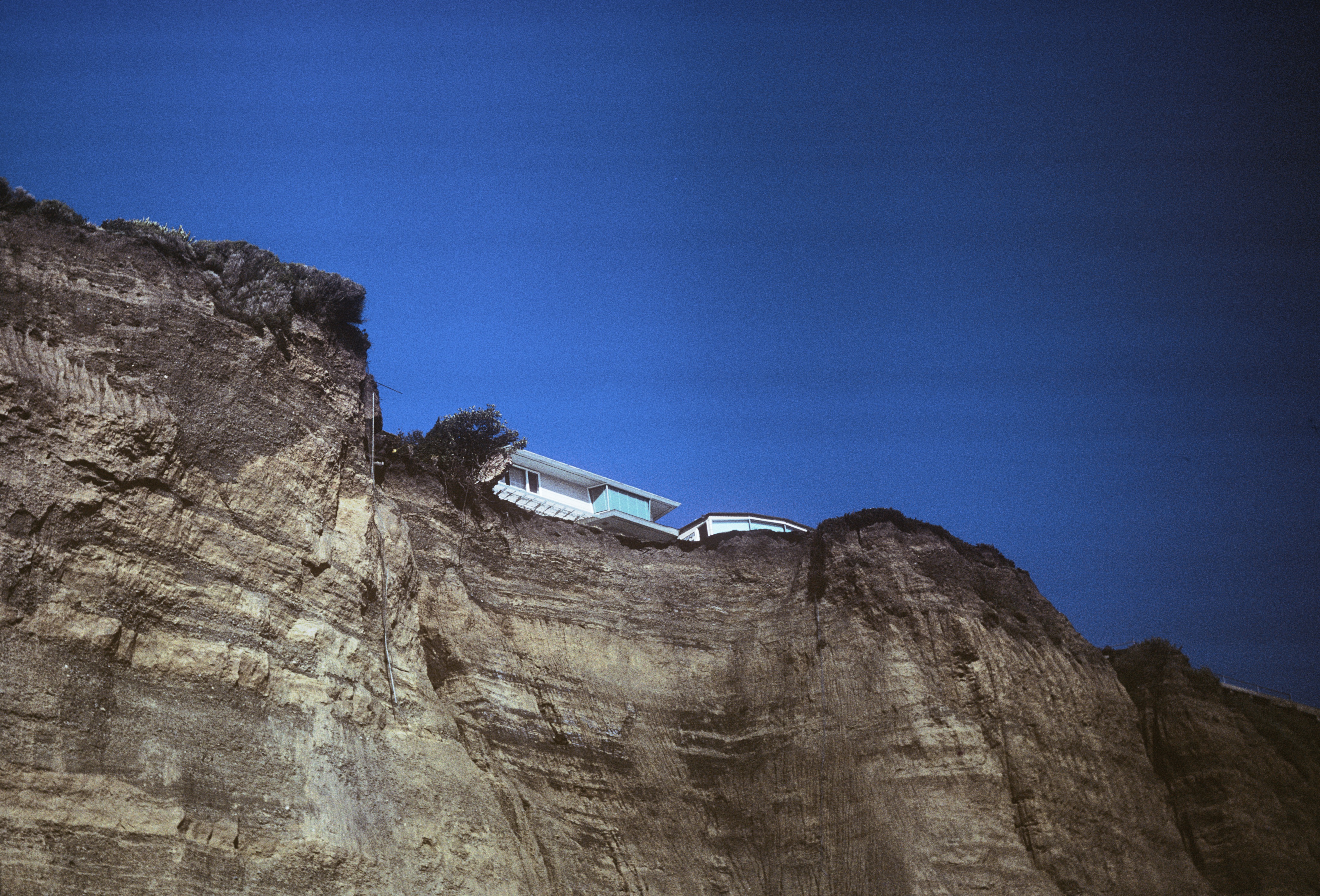
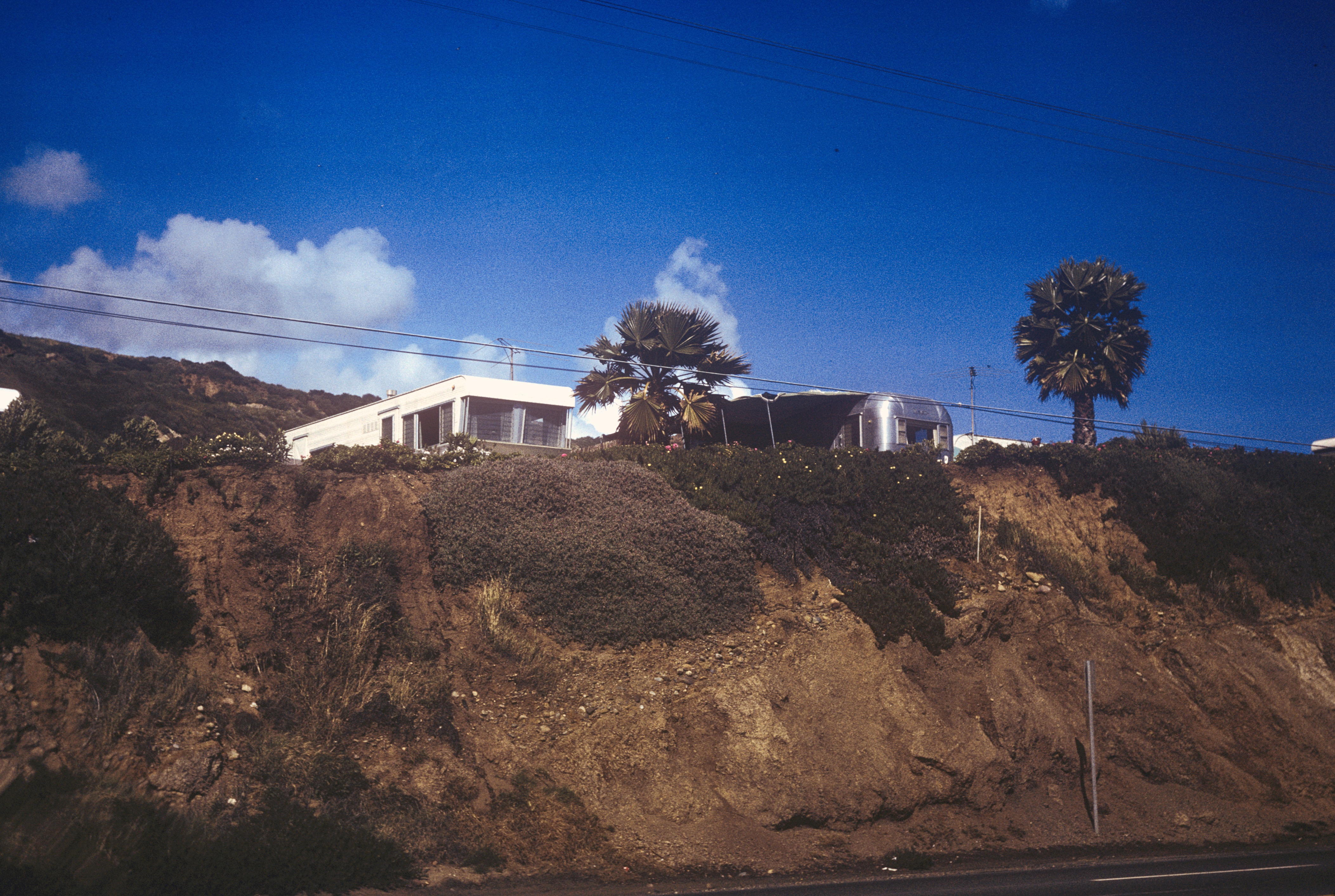
MCGRAW: You guys are a very well known for writing about this commercial aspect of Las Vegas—the need to capture the viewer’s eye from the freeway. Where can that tendency be found in Los Angeles today?
SCOTT BROWN: Anything along Lincoln Boulevard. Jack in the Box is a lovely example.
MCGRAW: You also lived in Los Angeles for a time.
SCOTT BROWN: I lived in a little house in Ocean Park, Santa Monica. My porch on Hart Street was a few yards from the beach. On my right, on the beach road, was a sidewalk broad walk, then parking, then the beach, the ocean, and then China. And I loved that. In the evenings, everyone came out on their porch to watch the sunset. It was spectacular to watch. So were the people. Bob and I got married there.
MCGRAW: In the beach house?
SCOTT BROWN: We married on the front porch, with festive flowers, signs, and banners. In preparation, the streets department sent a man with a broom and bucket to clean our block. The one-block road had one street light hung above its center line from a steel pole arch. We garlanded it for our wedding and our procession marched under. A wonderful mixture of neighbors, parents came from Europe and the East Coast, UCLA people attended. At that time I was taking photographs of people at Muscle Beach and at the calliope on the Santa Monica Pier—of bodies flying in the air against the skyline with the great curve of the calliope and their curving arms and spines set against it. I was trying to understand these and other patterns formed by people on the beach. Some seemed so regular that you could write an algorithm for them.
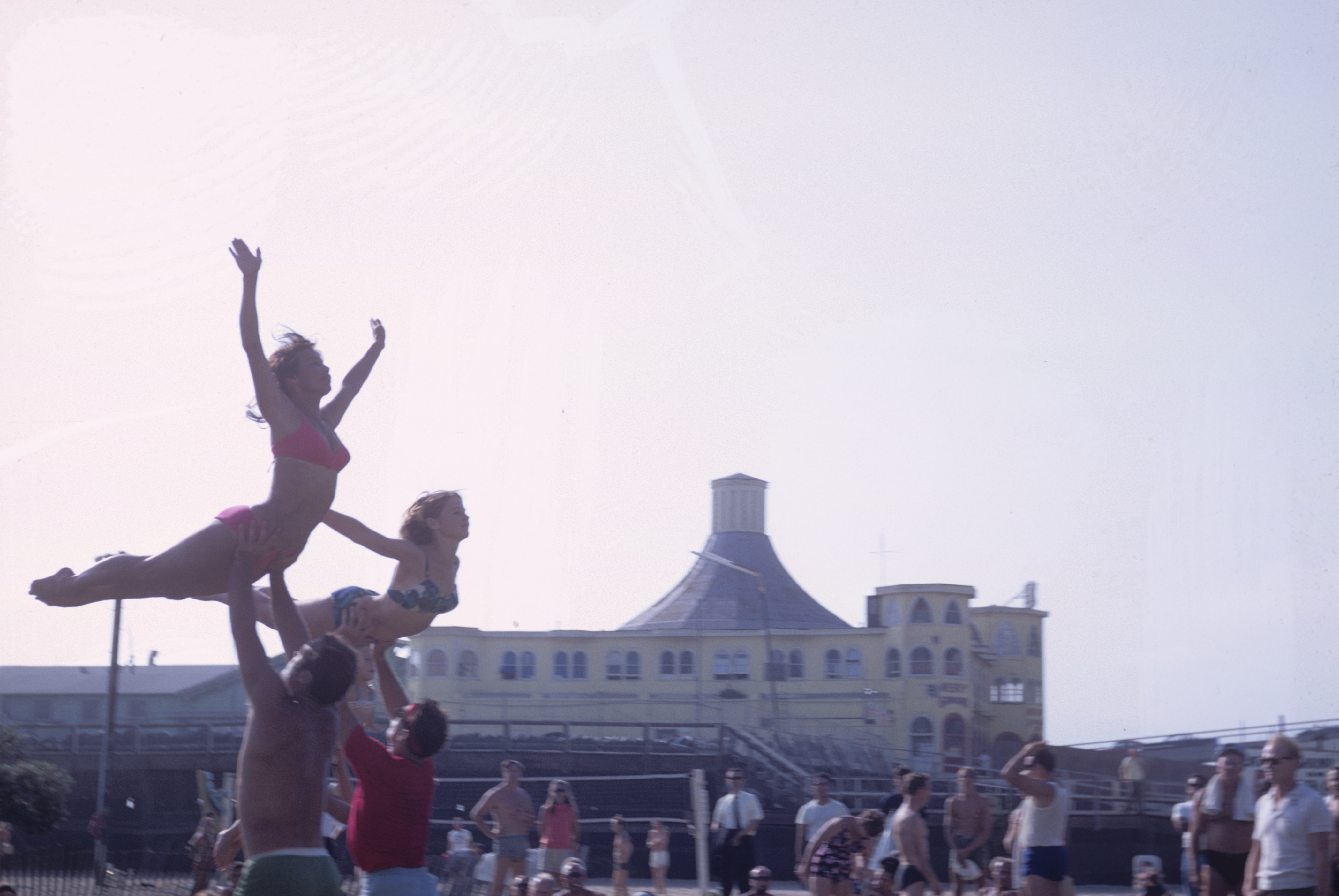
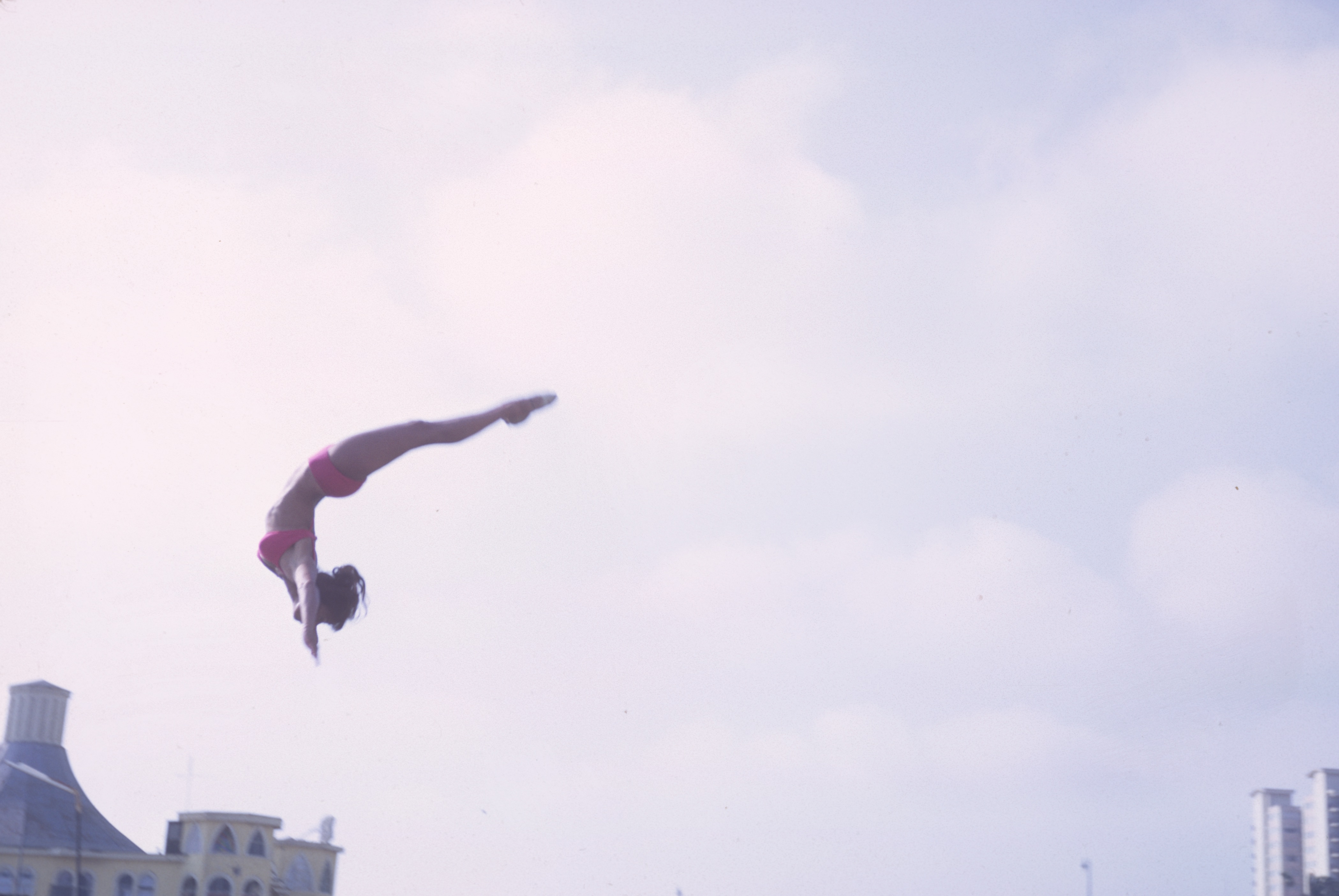
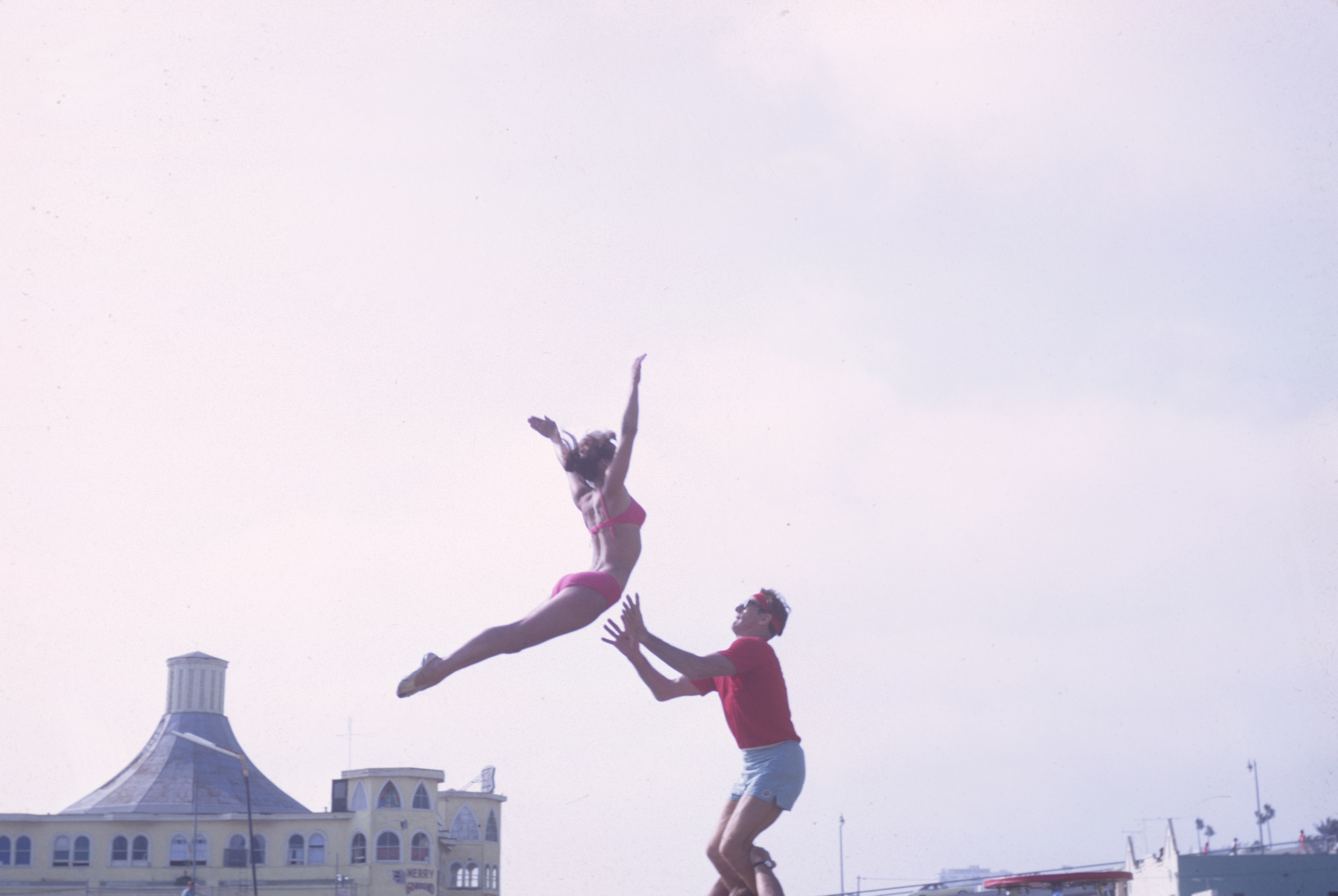
MCGRAW: The characters that inhabit these places are really important. Everybody’s a weirdo and an archetype at the same time.
SCOTT BROWN: Like the landlord of my house at the time. He’d come from Israel because he wanted to be a Hollywood film star. He was tall with iron-gray curly hair, a very fine figure of a handsome old man. But he had to become a kosher butcher instead. He and his wife made a whole life there and raised their family in my cottage, and were then living on a smaller one on a panhandle behind. “My little palace,” he called it.
MCGRAW: There’s a lot of similarities between LA and Las Vegas because of the time they were built and their geography. What separates LA and Las Vegas?
SCOTT BROWN: A legal system: in Las Vegas you could gamble, and in Los Angeles you couldn’t. Las Vegas was a one-horse town. Its only industry was gambling. Things got exaggerated in Las Vegas. People thought you could go big as you’d like once you crossed the city line, but there were some regulations. You had to have five feet of parking for every one foot of building. So huge buildings rode on seas of parking. It made Las Vegas an archetype that offered treats you couldn’t find in New York or anywhere else.
MCGRAW: You also built in Los Angeles as opposed to Las Vegas.
SCOTT BROWN: Yes, and I’m very involved at the moment in trying to save our addition to the MCASD in La Jolla. The museum is looking to add an $80 million extension which risks destroying ours in the process. Some supporters of the plan see its rewards as a great future for growth in this small and beautiful town, and good addresses for future development. We hope they will find ways to ensure the continuation of the existing museum and also of the historic precinct of Irving Gill buildings at its entrance.
MCGRAW: That building in particular—the MCASD extension in La Jolla—that design is so playful and seems to take directly from California freeway culture. I’m thinking of those kind of ballooning, oversized, really just fat columns.
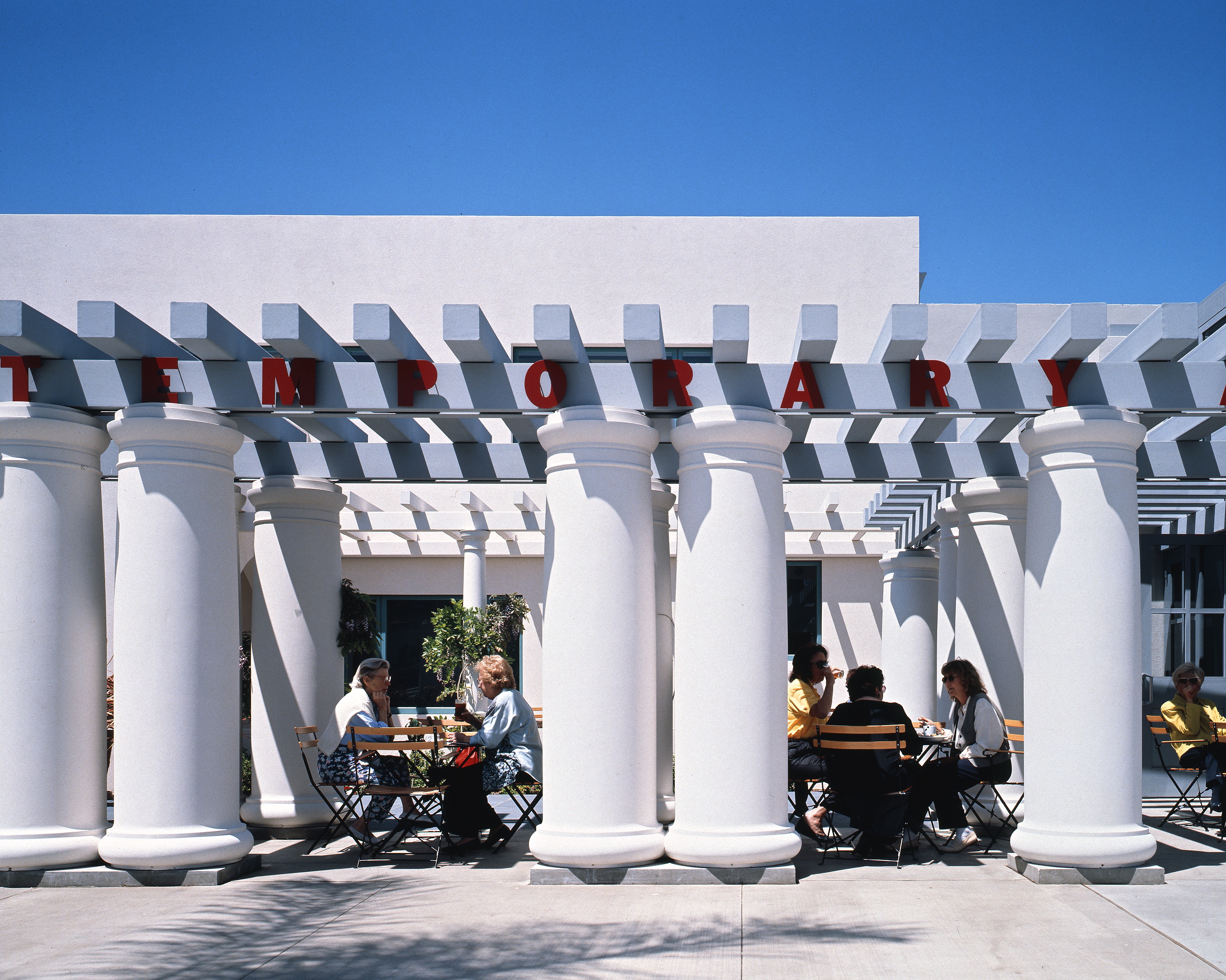
Image Courtesy: Venturi, Scott Brown and Associates, Inc.
SCOTT BROWN: Absolutely. We call the columns exuberant. Now, some people don’t like them. This is recent, and may change again with the present reassessment of Post-Modernism. But if the new idea is pleasure and casino resorts along the coastline South of the new museum, they had better learn to like exuberance.
MCGRAW: So the production of tackiness might come full circle?
SCOTT BROWN: Perhaps.

